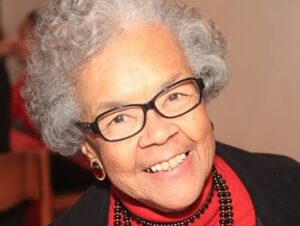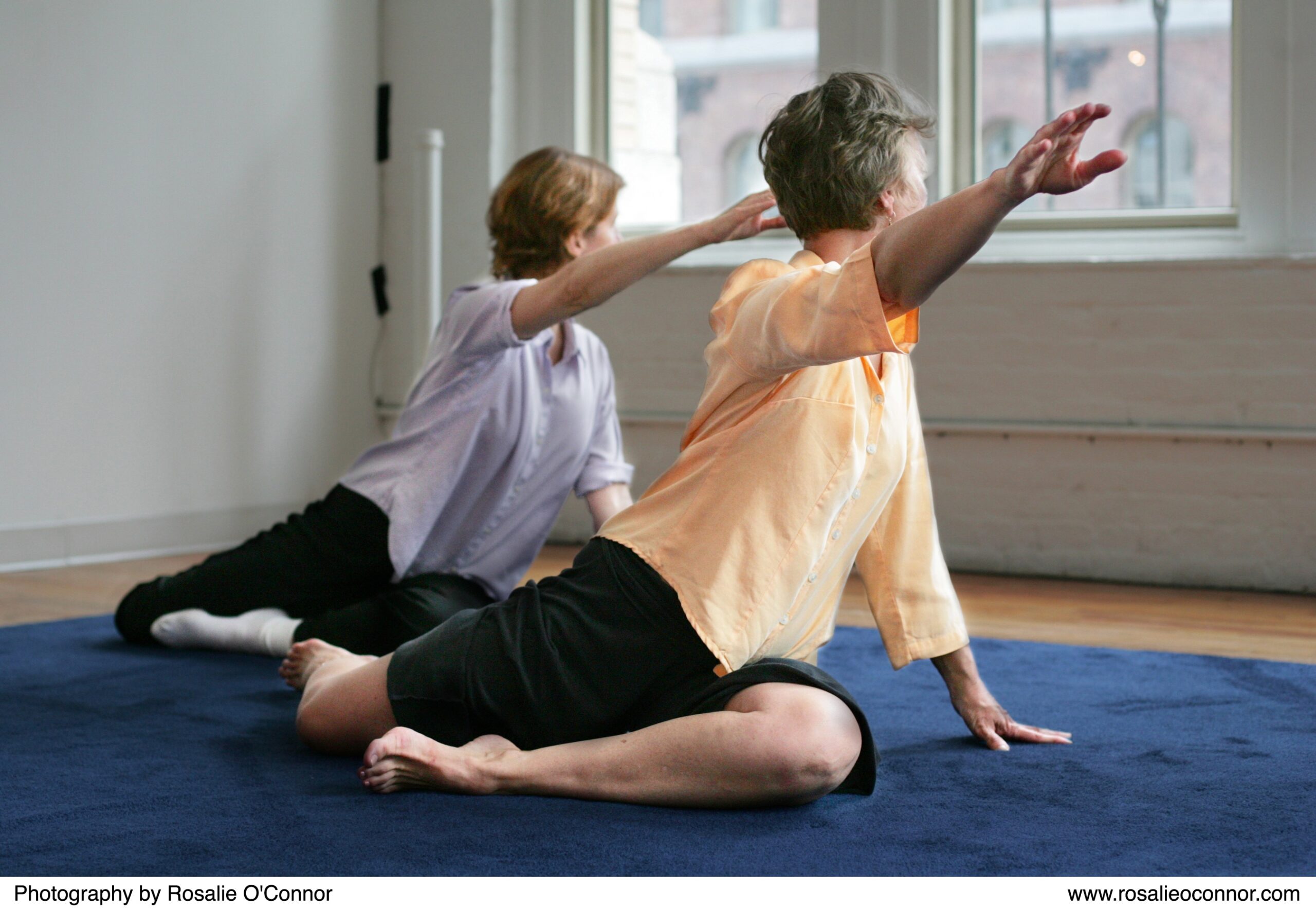For two days out of the week I can stand up straight with little or no pain – all because I have attended a Feldenkrais session. How I look forward to those two days!
In my retirement, after years of employment in which I constantly stood – as a sales clerk, a teacher, a librarian – I developed back problems along with one of the “myalgias”. That led to many searches for relief:
- A back specialist, whose only suggestion was surgery (which I rejected)
- an arthritis specialist, a physical therapist
- a chiropractor,
- a cortisone injection
- I didn’t try yoga!
I did get some relief from each of these treatments. Nothing was a complete cure, however.
In spite of the back problems I became very active in my retirement. One of my activities was a library group in which I made new friends. Two of the ladies, hearing of my physical problems, invited me to join them in a class they found helpful. I decided it was worth a try. Hence, my introduction to Feldenkrais.
Before my first class I had some concerns.
Growing up, I was never the athletic type. Through the years there were many experiences I had trying to participate in swim classes, tennis classes, etc., that I did not want to relive.
I grew up in a small town (less than 500 people) with no public swimming pool- and even if there had been I would not have been able to use it. Segregation!!
My first experience in the water was during my freshman year of high school. We had an indoor pool and gym class consisting of three days swimming and two days of health education. I only saw the teacher in the pool once the whole year. She walked along the side with a very long pole, barking instructions. I was frightened of the water and didn’t learn a thing. Not even how to float. I only passed gym because I aced health ed, giving me a C.
The next time I tried swimming was in a class at the YWCA. There was a young teacher who stuck with the fast learners. That left me out. After retirement, in physical therapy, I had one session per week with a water component. I learned to do exercises in three feet of water. That’s the extent of my swimming ability.
I had a little more success with my tennis adventures. After many attempts I was able to
get the ball over the net. The group class was less stressful. I had peers, with varying degrees of ability, that were also interested in learning. With tennis I could also practice on my own against a backboard. However I’m not a tennis player. I’m just nonathletic.
That’s the beauty of Feldenkrais: you don’t have to be athletic!
My first session turned out to be intriguing. I was not going to be labeled a doofus for not being able to keep up and being the oldest person in the class did not matter. The trainer gave clear oral directions, no demonstrations. The movements were performed while lying on a mat – the only upright movement was when you were told to get up and walk around at the end. If you found an instruction confusing or difficult you were told to do it in your imagination.
Can you believe that?
For the past 15 years I have had varied experiences with Feldenkrais classes. My original trainer held small classes at her home or at a recreational center. All of the movements were performed on a floor mat. You brought your own and if it was not thick enough that was your problem!
Later I had to relocate to Baltimore for a period of time. I asked my trainer for a referral and she referred me to a practitioner recognized as a master. This practitioner also operated out of her home but with a completely different setup. The lower level of her home was equipped with the needed materials: floor covered, mats available, etc. Because I was a referral the trainer assumed that I was going to be more skilled than I was. The first class she assigned me to had twenty some members. Ages ranged from twenties to probably fifties Most of them were musicians. Again I was the oldest person in the class.
I was not able to keep up with this class as well as my first but the same attributes were exhibited by the trainer: she was non judgmental, sensitive and very supportive. Luckily she had a second class that was more on my skill level and, at her suggestion, I became a member of that one. Because she was involved with training other trainers her classes were discontinued for awhile and I tried some other classes. These experiences pointed out what is true often with any learning experience: the teacher makes the difference.
I moved back to Virginia and back to my first trainer. Then back to Baltimore and thank goodness for the miracle of ZOOM we are continuing classes along with the two friends that introduced me to the Feldenkrais method. One lives in West Virginia, the other in Montana . We are often limbering up as we chat as friends do
As I said, for two days a week I can move pain free and stand with good posture. Why is that? What happens in a Feldenkrais session is the explanation.
We are directed to make certain combinations of movements that are contrary to the way you normally move. They are easy to do and you are directed to do them to the best of your ability. (And don’t forget you can do them in your imagination if they prove to be too difficult.) For forty-five minutes to an hour you are usually lying down – reaching, touching, bending, turning, breathing, and learning things about your body you never knew. The rest period after each specific movement is as special as the movement itself. That’s the physical part of an ATM class.
There is also a mental aspect to it. The cadence of the trainer’s voice helps you to relax. Following the directions keeps you mentally alert. And when you are not quite sure about the direction being given your thought process is put to task, trying to figure it out.
When you stand at the end of the session you walk around and process what you have learned , put it into focus. And in my case I am standing upright.
I have participated in Feldenkrais sessions as a septuagenarian, octogenarian, and now that I am a nonagenarian I am still enjoying the benefits of Awareness through Movement classes.
Who knows – I may still be participating as a centenarian!
So I invite you to come “bend your knees and stand your feet” as a way to keep moving in your senior years.
 About Helen
About Helen
Helen O. Carr, age 93, retired as an Educational Specialist in Media and Technology from the Baltimore City Public Schools over 30 years ago. She is a graduate of Coppin State Teachers College (now Coppin State University)Baltimore, MD, a HBCU. She has MSLS from Wayne State University, Detroit, MI. She has a daughter, two adult grandchildren and a great granddaughter in her second year of college. Her current hobbies are reading and enjoying Masterpiece productions on PBS. Their new streaming service Passport is a favorite.
Her participation in Feldenkrais ATM sessions began about 20 years ago. She now attends classes twice a week with the emergence of ZOOM.

